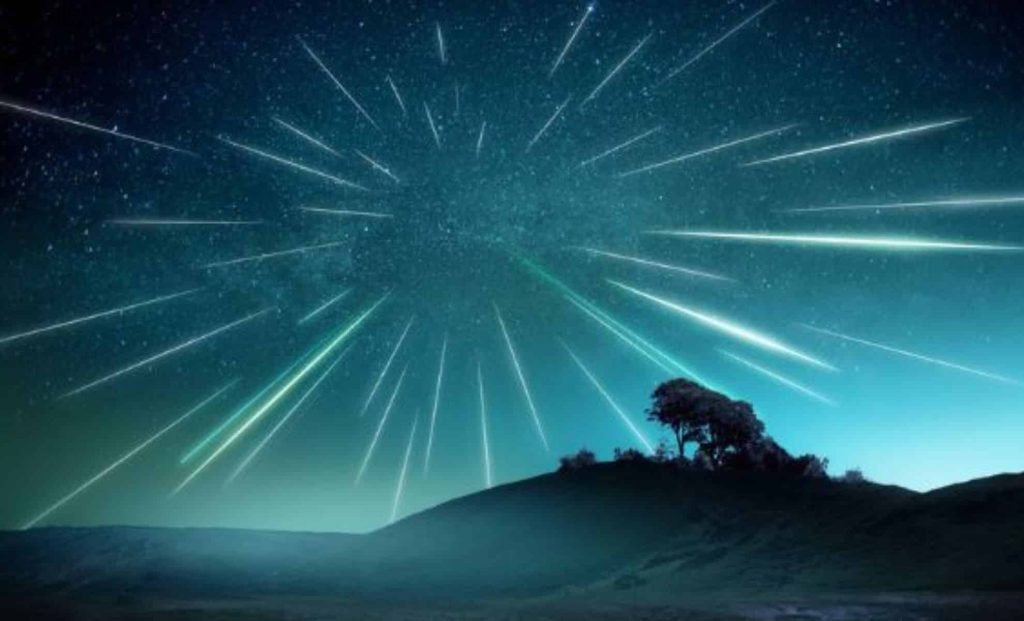One of the most spectacular annual celestial phenomena, the Perseid meteor shower, is set to light up the night sky again this summer.
With activity expected to peak on the night of August 12-13, and no bright moonlight to interfere, skywatchers will be pleased to know that 2024 will be a great year to observe the meteor shower.
The Science of the Perseid Meteor Shower
of Perseid meteor shower They are caused by debris from the comet 109P/Swift-Tuttle. As Earth passes through the comet’s wake, the debris hits the atmosphere at a speed of about 36 miles per second, creating spectacular streaks of light. These meteors are bits of ice and rock left behind by the comet as it orbits the Sun, and Earth experiences this phenomenon every year.
Named after the constellation Perseus, these meteors appear to radiate outward. From mid-July To Late August, Visibility is usually best in mid-August. Perseid meteor shower Known for its bright meteors and long-lasting shooting stars, visible even from suburban areas, this annual event is a reminder of the dynamic nature of our solar system and provides a spectacular show of celestial fireworks as tiny comet particles burn up in Earth’s atmosphere.
Perseid meteor shower Comet Swift-Tuttle is particularly notable because its debris is relatively large compared to other meteor showers, making the meteors more frequent and bright. The comet itself is large, measuring 16 miles in diameter, and the debris stream is dense, making it a rich source of meteors.
These particles can be as large as grains of sand. Bright flash of light As the comet enters Earth’s atmosphere, it disintegrates, adding to the visual splendor of the phenomenon. This process not only creates a stunning spectacle, but also provides scientists with valuable data on the composition and behavior of cometary material.
When and where to watch
Perseid meteor shower It is best seen in the Northern Hemisphere July 17th to August 24th Activity peaked August 12th – 13th. To get the most out of your viewing, it’s best to find a spot with a clear sky away from city lights. The Perseids, where the meteors are expected to appear, are best seen in the early hours after midnight. On the peak night, the moon will be a waxing crescent moon and set around midnight, darkening the sky and opening up visibility.
At the peak, observers 50-100 meteors per hour Under ideal conditions, the best time to view meteors is after midnight, when the sky is at its darkest and meteors are most likely to appear. Light pollution maps can help you find the best viewing locations. Meteor shower Though it can be difficult to forecast, the Perseids produce such a high number of meteors that a spectacular meteor show is guaranteed if the weather is good. The Perseids are especially special because of the sheer number of meteors that can be seen, and they consistently provide a spectacular show.
People living in urban areas Minimal light pollutionNational parks, rural areas, or dedicated dark sky preserves are great places to watch. The Perseid meteor shower can be seen by anyone, as no special equipment is required. Just find a comfortable spot, bring a blanket or a recliner, and look up at the sky. It may take some time for your eyes to adjust to the darkness and start to spot the meteors, so patience is key.
How to observe the Perseid meteor shower
To view Perseid meteor shower, No special equipment is required; all you need is your eyes and a little patience. Find a comfortable spot, lie on your back, and look up at the sky. Allow your eyes about 20 minutes to adjust to the darkness for the best viewing experience. Use a stargazing app like SkySafari to PerseusHowever, meteors can be seen across the entire sky, and the beauty of meteor showers is that they are best observed with the naked eye, offering an unobstructed view across a vast expanse of the night sky.
Perseus The best way to find it is to first find the neighboring constellation, Cassiopeia, which has a distinctive “W” shape. Perseus Adjacent Cassiopeia You can focus your gaze on the meteor’s point of origin. However, for meteor showers, meteors can appear anywhere in the sky, so you don’t need to focus only on the radiant point. Don’t forget to wear warm clothes and bring snacks and drinks to make the night more comfortable. It’s also helpful to use a red flashlight to preserve your night vision while traveling and checking maps.

The Perseid meteor shower is a great opportunity for family and friends to get together and enjoy the wonder of the night sky together. Although a telescope or binoculars are not required to see meteors, organizing a viewing party will add to the fun. Sharing the experience with others adds to the excitement and also gives you the opportunity to learn about the stars, planets and other celestial phenomena visible on a clear night.
Other notable meteor showers
While the Perseids are the highlight of summer, several other smaller meteor showers are also active during the same time. These include the Capricornids, Delta Aquarids, Piscis Austrinus, Alpha Capricornids, Iota Aquarids and Kappa Cygnids. Although these meteor showers produce fewer meteors, they are more varied in colour, speed and trajectory. Summer meteors are particularly prominent from late July to mid-August, giving skywatchers ample opportunity to enjoy the celestial show.
These additional meteor showers enhance the overall stargazing experience, allowing enthusiasts to observe different meteor features. Each meteor shower has its own origin and viewing conditions, contributing to the appearance of different meteors in the night sky. For example, the Delta Aquarids meteor shower, which peaks in late July, often overlaps with the Perseid meteor shower, resulting in a variety of meteor appearances. The Capricornids meteor shower is known for its slow-moving fireballs, which add a unique sight to the night sky.



